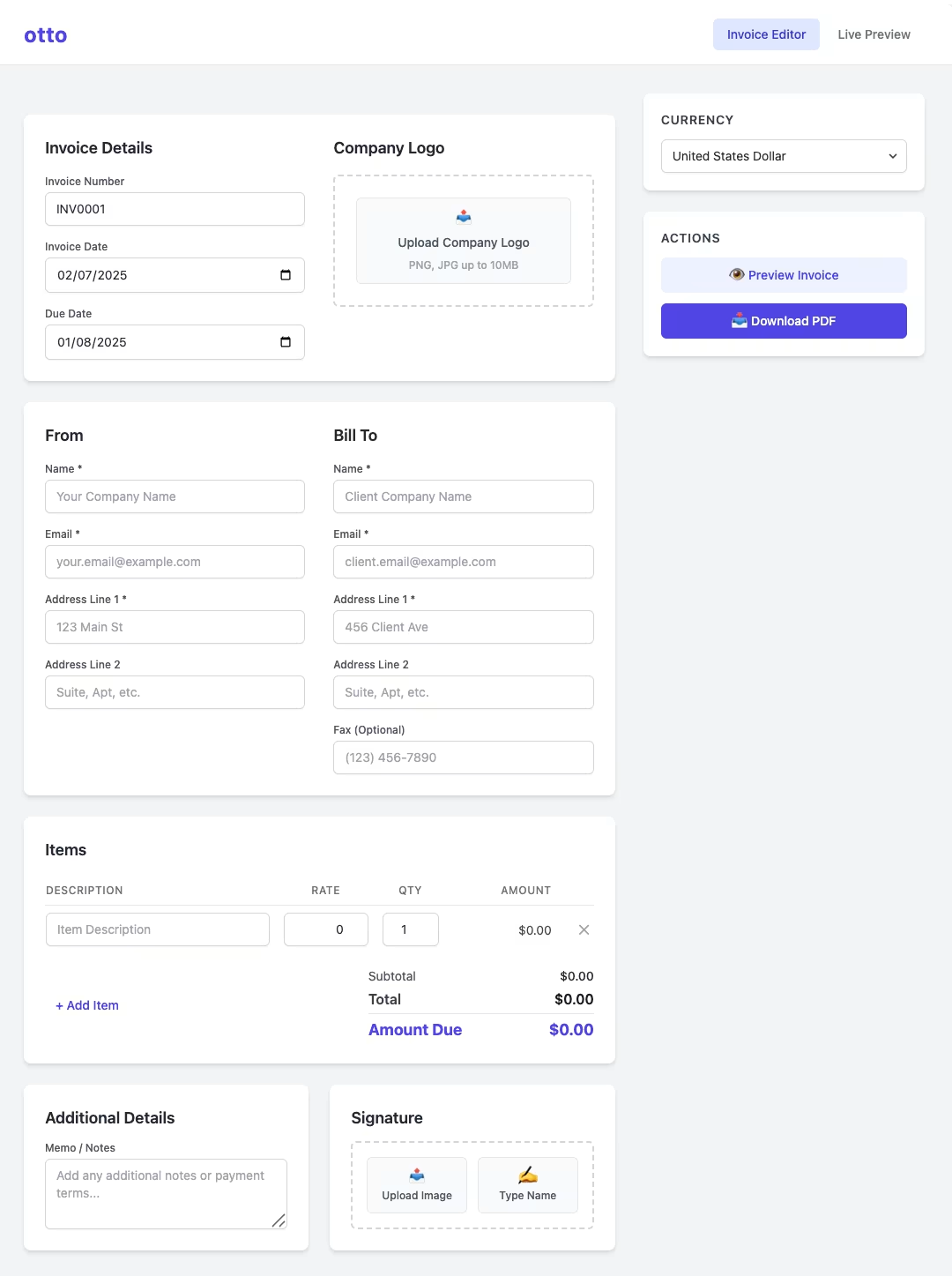
Introduction: Ever Received a Bill and Wondered What It Really Meant?
You’ve likely received one. Maybe after a contractor fixed your leaky faucet, or your freelancer sent it after wrapping up your website. It’s called an invoice—a word that sounds a little formal, but it plays a big role in everyday business and personal transactions.
But what is an invoice, really? Why is it so important—not just for accounting but also for maintaining transparency, trust, and smooth financial operations?
In this post, we’ll break down the definition of an invoice, its essential components, and why every business (even freelancers!) should care about getting it right. Whether you’re new to invoicing or want a clearer understanding of how it works, this guide will walk you through it all.
A Simple Definition
An invoice is a document that records a transaction between a buyer and a seller. It lists:
It’s essentially a payment request, typically sent after goods or services have been delivered. While it might seem like just a formality, invoices are critical for tracking sales, managing cash flow, ensuring compliance, and maintaining clear communication between parties.
Think of it like this: If a contract is the handshake before work begins, an invoice is the polite nudge after it ends—“Hey, here’s what we agreed upon, and here’s how you can pay me.”
Invoices are more than just bills. They’re legal, financial, and operational tools. Here’s why they matter:
1. Proof of Transaction
Invoices serve as a record that a service or product was provided. This is vital for resolving disputes, tracking income, and maintaining audit trails.
2. Cash Flow Management
For businesses, invoices help forecast revenue and manage expenses. Without them, it would be near impossible to know who owes what—and when.
3. Tax and Legal Compliance
Invoices are critical when filing taxes. They show income received, taxes collected (like GST or VAT), and help with deductions.
4. Professionalism
Sending a clear, well-structured invoice reinforces trust and signals that your business is legitimate and organized.
5. Automation and Analytics
Digital invoicing systems allow businesses to automate payments, track overdue invoices, and generate financial reports—all with real-time data.
To put things into perspective, imagine Maya, a freelance graphic designer. She just completed a logo design for a client. If Maya only sent a casual email asking for money, things could get messy—no clear pricing, due dates, or payment terms.
Instead, she sends an invoice with:
This protects both Maya and her client. Everything is documented, and payments stay on track.
Every invoice, whether issued by a global company or a local service provider, generally includes these essential elements:

1. Header – The Word "Invoice"
This clearly identifies the document’s purpose. It shouldn’t be buried or vague.
2. Invoice Number
A unique identifier (e.g., INV-1023) used to track the invoice for reference, audits, and payments. It also helps avoid duplication.
Tip: Use a systematic numbering format (e.g., INV-2025-001) for better tracking.
3. Issue Date and Due Date
Clear timelines reduce late payments.
4. Seller’s Information
This includes:
5. Buyer’s Information
Just like the seller’s info—but of the customer. It shows who is responsible for the payment.
6. Itemized List of Products or Services
Break down the offerings clearly:
This builds transparency and trust.
7. Subtotal
The sum before taxes or discounts.
8. Applicable Taxes
List any:
Include the percentage and actual amount. This ensures legal compliance.
9. Discounts (if any)
E.g., “5% Early Payment Discount” can incentivize quick payments.
10. Total Amount Due
Bold this section—make it easy to spot. It’s the number everyone cares about.
11. Payment Terms
This is often overlooked but crucial. Clarify:
Example: “Payment due within 15 days. A 2% late fee applies after the due date.”
12. Notes or Special Instructions
Add a human touch or practical details:
Read More: How to Create an Invoice in Excel
Depending on the context, there are different types of invoices:
1. Proforma Invoice
Sent before goods/services are delivered. It’s like a quote—not a final bill.
2. Interim Invoice
For long projects, these are sent at milestones (e.g., 25% upfront, 50% after first draft).
3. Recurring Invoice
Used for subscription-based services (e.g., monthly software usage).
4. Final Invoice
The last bill in a series, summarizing the total project cost.
5. Credit Note
Issued when a customer returns goods or is overcharged—serves as a refund or adjustment.
Traditionally, invoices were paper-based. But now, digital invoices are the standard. Why?
Benefits of Digital Invoicing:
According to a report by Statista, over 80% of small businesses now prefer digital invoicing platforms for their efficiency.
Even seasoned professionals can slip up. Here are a few things to watch for:
Tracking becomes impossible, especially during tax season.
Always be specific. “Design work” is unclear. “5 pages of website design” is better.
Automate reminders or follow up manually if a payment is delayed.
This leads to confusion and inconsistent cash flow.
If you send late, don’t be surprised if you get paid late too.
If you're a business owner, freelancer, or part of a finance team, automation is your friend. Here’s how it helps:
Platforms like Otto Invoicing offer invoicing, time tracking, and reporting built-in.
Read More: Best Invoice Automation Software 2025
Invoices aren’t just for big corporations. For solopreneurs, they’re your financial lifeline. Here's why:
A professional invoice shows that you're serious and organized.
Clear due dates and terms make expectations obvious.
Over time, invoices act as a mini history of your projects and clients.
No more scrambling through emails or memory. It’s all documented.
Invoices may look simple, but they’re a powerhouse behind every healthy business. They track income, ensure legal compliance, maintain relationships, and streamline operations.
Whether you’re a freelancer, startup, or a growing company—mastering the art of invoicing is mastering the art of getting paid.